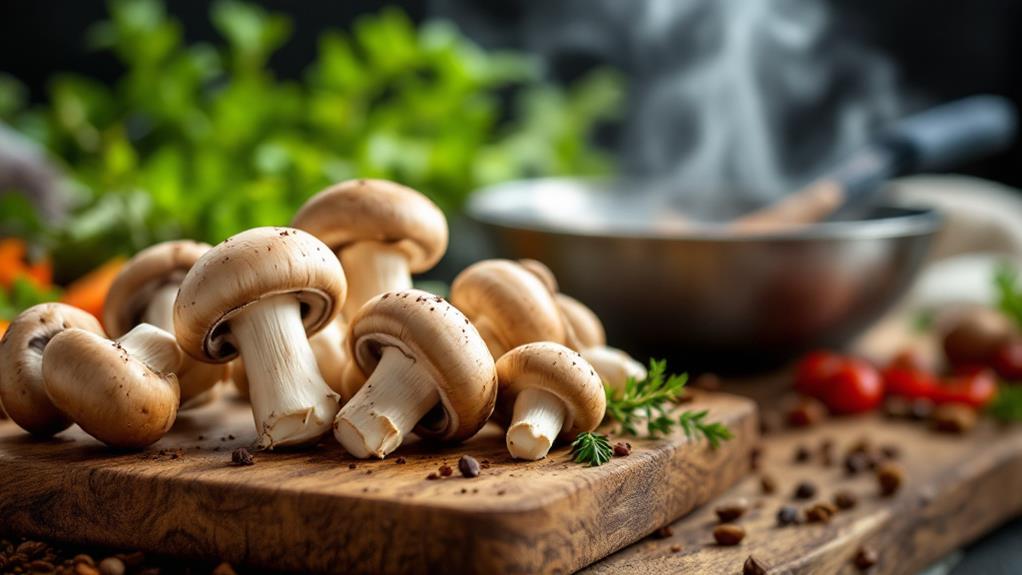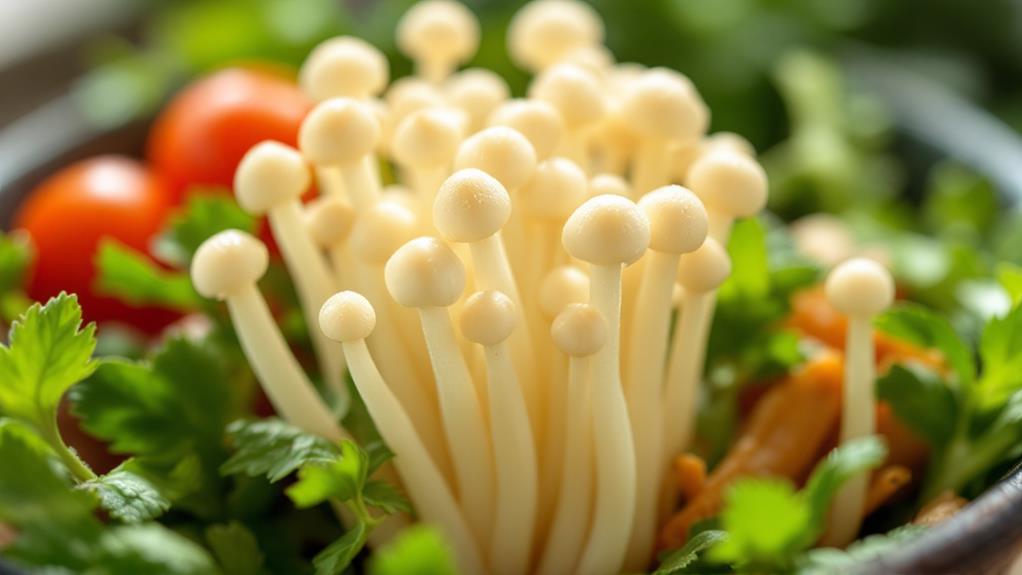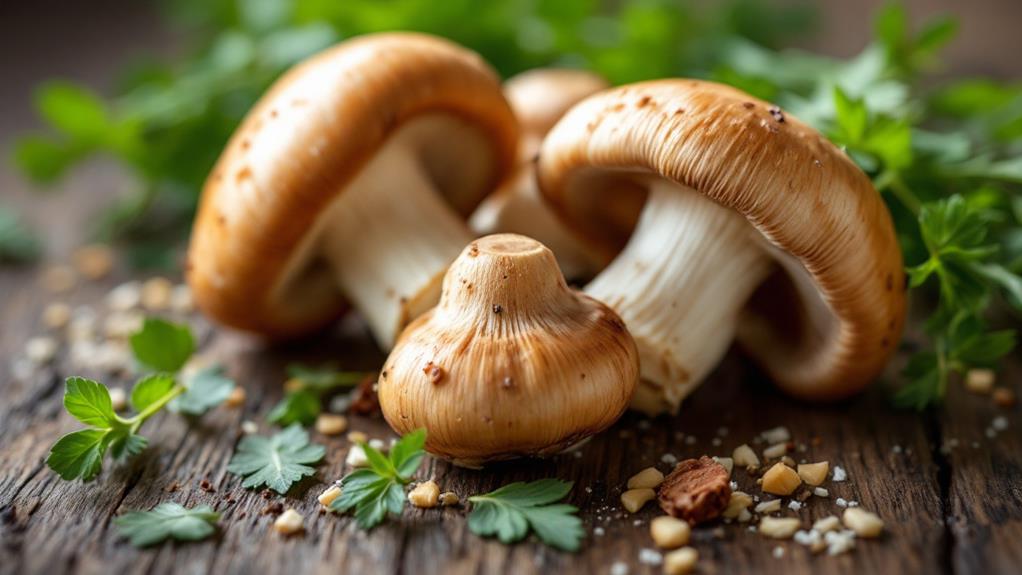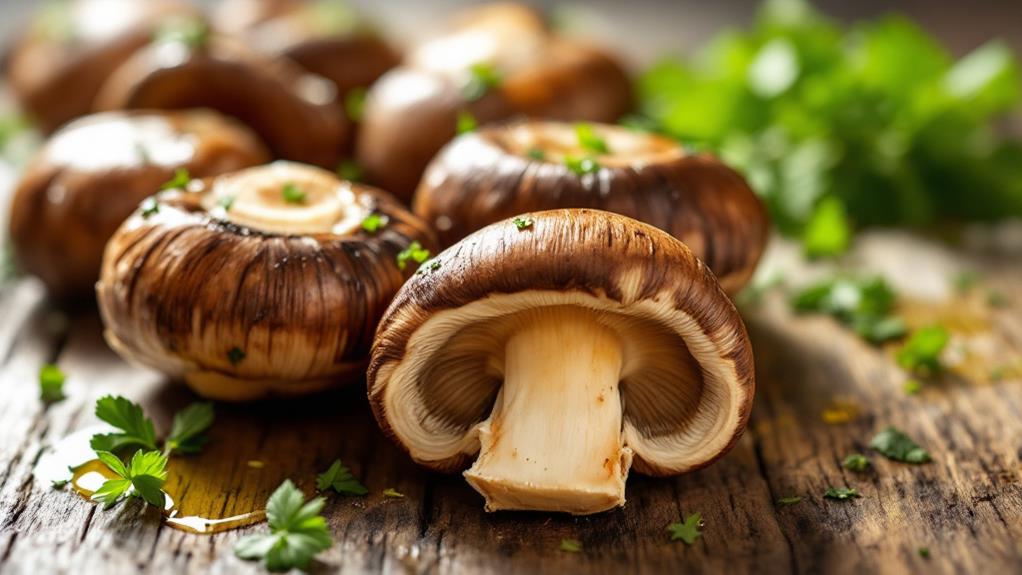Porcini Mushrooms: A Nutritious Guide to These Flavorful Fungi
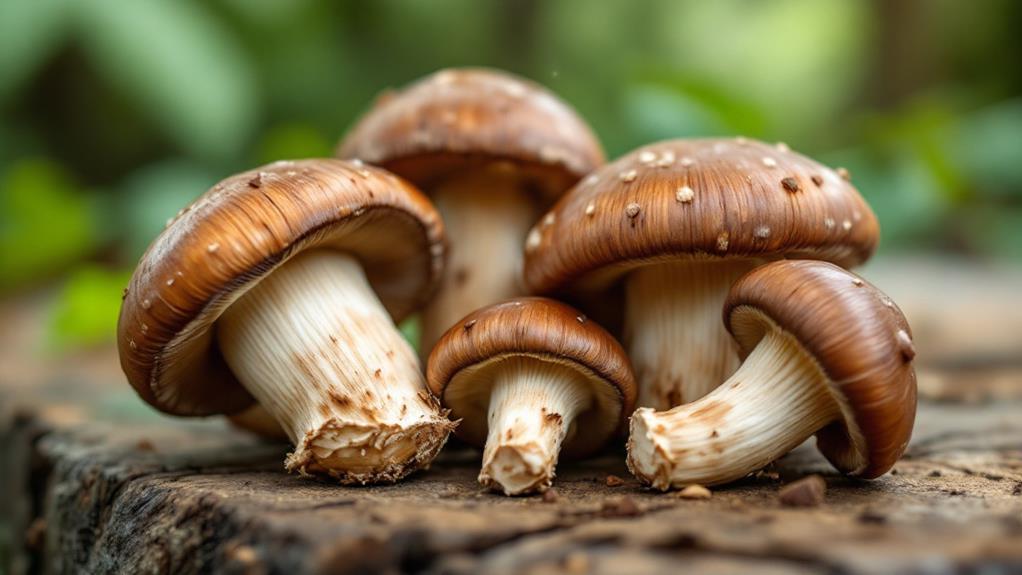
Porcini mushrooms are not just flavorful, they're nutritious too. You'll love their rich taste, and they're easy to spot with large brown caps and sturdy white stalks. They're a great source of B vitamins and potassium, supporting energy and heart health while low in calories. These mushrooms contain antioxidants like ergothioneine, which fight oxidative stress. Sauté or grill them for that earthy flavor in your favorite dishes. When buying, pick fresh ones or high-quality dried selections. If you're interested in learning about the best methods to prepare and store them, you'll find more useful tips below.
Identifying Porcini Mushrooms
When you're identifying porcini mushrooms, a few key features stand out. These mushrooms, scientifically known as *Boletus edulis*, boast large, round brown caps that can measure up to an impressive 1 foot in diameter. The caps are dark brown with white edges, and you'll notice they might feel slightly sticky when wet. Unlike many mushrooms, porcinis have porous undersides instead of gills, which is a distinctive characteristic. Their stout, white cylindrical stalks provide a firm base, and at full growth, these mushrooms can weigh up to 2 pounds, reaching heights of nearly 1 foot.
Porcini mushrooms are a gourmet delight, prized for their firm texture and nutty, earthy flavor that enhances diverse cuisines. When you're out in the wild, identifying these mushrooms involves more than just their appearance. You'll often find them thriving in moist habitats near specific trees like birch and beech. These trees are crucial to their growth, forming a symbiotic relationship that helps the porcinis flourish. Keep an eye out for these trees when foraging, as they can guide you to the prized fungi. With these characteristics in mind, you can confidently identify porcini mushrooms in their natural habitat.
Nutritional Benefits
Porcini mushrooms are a powerhouse of nutrition, offering numerous health benefits that can improve your diet. They're rich in B vitamins like riboflavin and niacin, significant for energy metabolism and overall health. These vitamins guarantee your body efficiently converts food into energy, keeping you active and lively. Porcini mushrooms are also packed with dietary fiber, about 2 grams per 100 grams, which aids digestion and supports gut health. This fiber enhancement is fundamental for maintaining a healthy digestive system.
Low in calories and free from cholesterol, porcini mushrooms make a heart-healthy supplement to your meals. They can help manage cholesterol levels, potentially reducing the risk of heart disease. Furthermore, they contain important minerals like potassium and selenium. Potassium is critical for regulating blood pressure, while selenium supports your immune system, keeping it strong and ready to fight off illnesses.
Packed with antioxidants, including ergothioneine, porcini mushrooms combat oxidative stress, which may reduce the risk of chronic diseases. These antioxidants protect your cells, promoting long-term health and vigor. Including porcini mushrooms in your diet can contribute to improved well-being and offer a delicious way to support your health.
Cooking Techniques
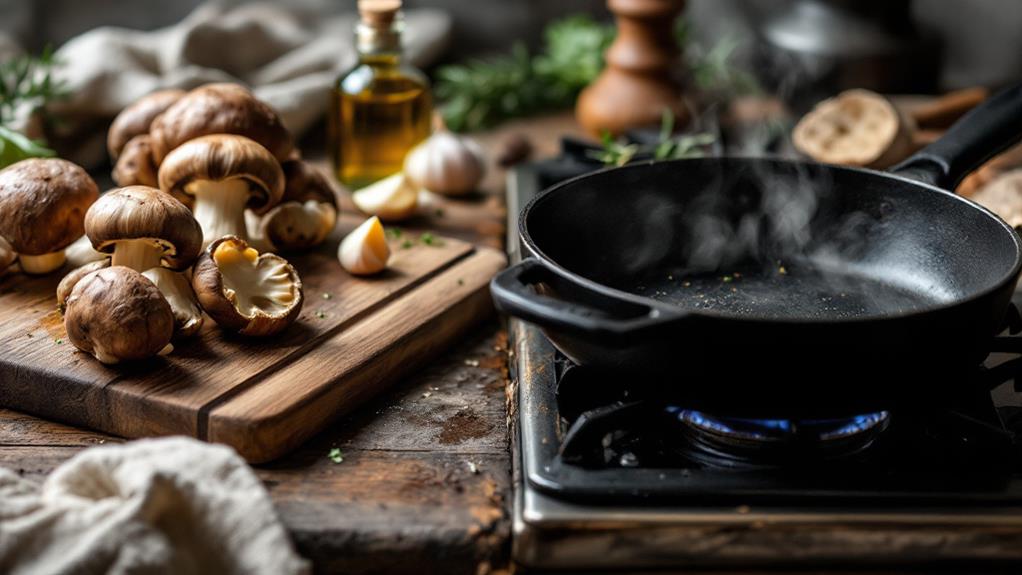
With their impressive nutritional benefits in mind, you might be enthusiastic to incorporate porcini mushrooms into your meals. Fresh porcini mushrooms are versatile, offering rich, earthy flavors that can uplift any dish. Here are some cooking techniques to help you make the most of these flavorful fungi:
- Sautéed: Cook fresh porcini mushrooms in olive oil or butter to improve their rich, earthy flavors. This method is perfect for risottos and pasta dishes, where their umami characteristics shine.
- Dried Porcini Mushrooms: Rehydrate them in warm water for 20-30 minutes. This process not only restores their hearty texture but also intensifies their flavor, making them ideal for soups and sauces.
- Grilling and Roasting: These methods bring out porcini mushrooms' natural sweetness and nuttiness. Use them as a delicious side dish or topping for meats to add depth and complexity.
- Vegetarian Recipes: Incorporate porcini into dishes like stuffed peppers or grain bowls. Their hearty texture mimics meat, making them appealing to both plant-based and omnivorous diets.
Buying and Storage Tips
For the best taste and texture, choose fresh porcini mushrooms with firm caps and creamy undersides, avoiding any that show signs of browning or sliminess. Freshness is essential for flavor, so always inspect the cream underside carefully. Regarding dried porcini mushrooms, opt for whole mushroom pieces with a reddish-brown hue and a strong aroma, as these indicate a high quality and flavor concentration.
To store porcini effectively, wrap fresh mushrooms in wax paper or paper towels before placing them in the refrigerator. This method will keep them fresh for up to three days. For longer preservation, consider freezing or drying them using a dehydrator or a low oven. This approach extends their shelf life for several months, allowing you to enjoy them later.
Dried porcini mushrooms require specific storage conditions. Keep them in an airtight container and store them in a cool, dark place. This prevents moisture from degrading their quality and helps preserve their rich flavor. By following these buying and storage tips, you guarantee your porcini mushrooms remain a delightful enhancement to your culinary creations.
Foraging and Harvesting
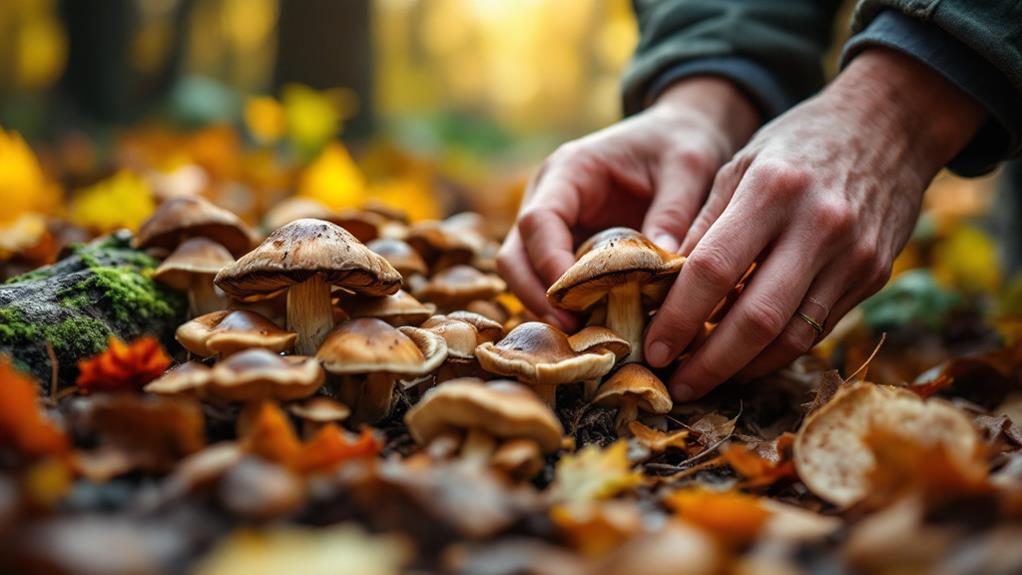
Starting on a mushroom-foraging expedition can be a rewarding experience, especially when searching for the prized porcini in lush forests. These flavorful fungi thrive in moist environments and form a symbiotic relationship with birch and beech trees. The peak season for foraging porcini is from late summer to fall, specifically between September and November, and sometimes in spring. Here's a simple guide to help you on your adventure:
- Locate: Seek out moist environments where birch and beech trees are abundant, as porcini mushrooms often grow nearby.
- Harvest: Use a sharp knife to cut the mushroom at the base, ensuring the root system remains intact, which promotes future growth.
- Practice Responsible Foraging: Avoid overpicking by leaving some mature mushrooms behind, allowing them to produce spores and support healthy mushroom populations.
- Clean: After harvesting, clean porcini mushrooms by brushing off dirt and wiping them with a damp cloth. Avoid soaking them to prevent excessive water absorption.

